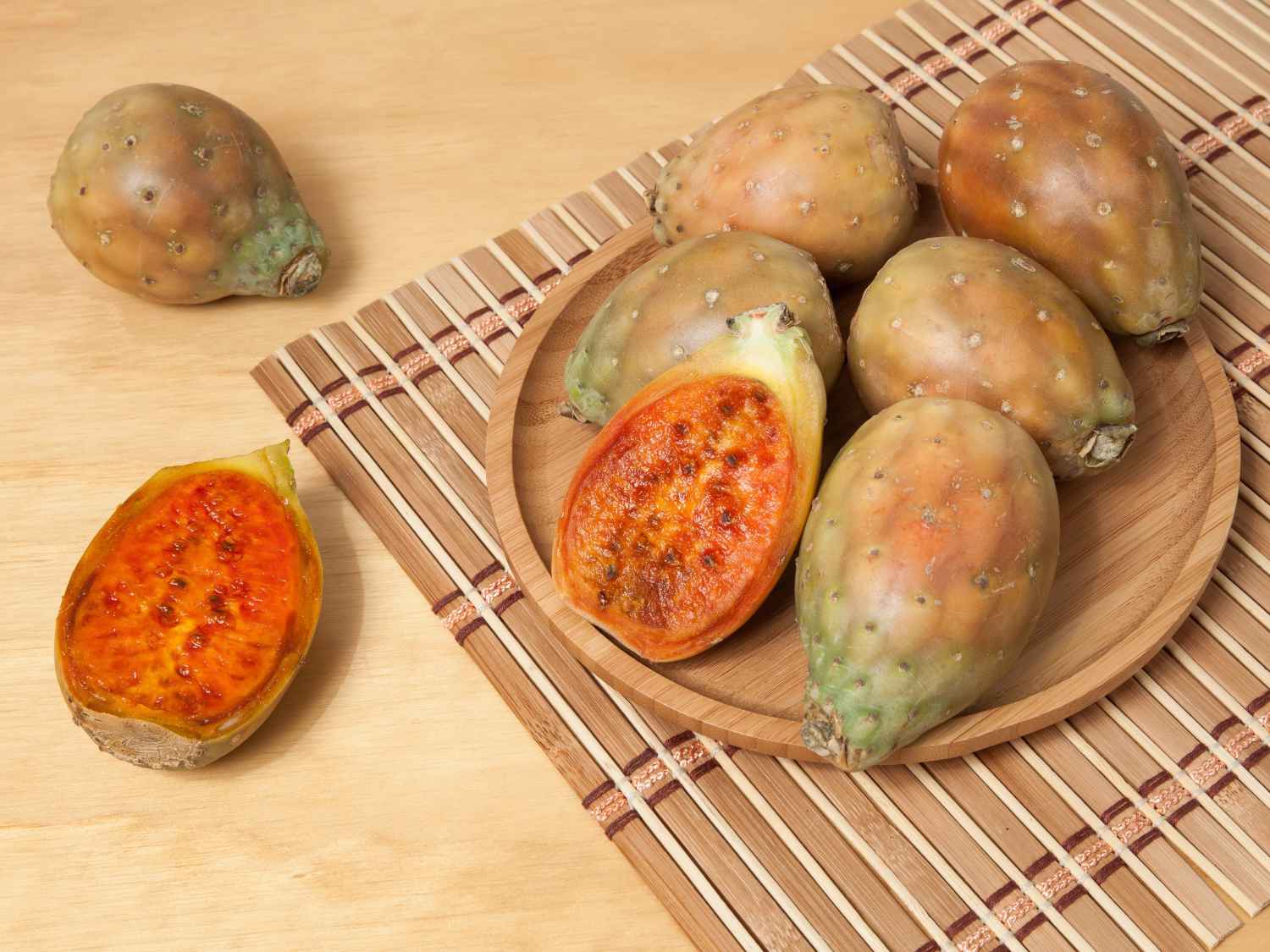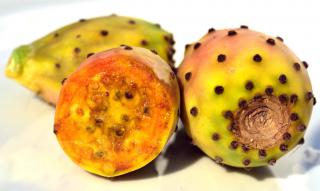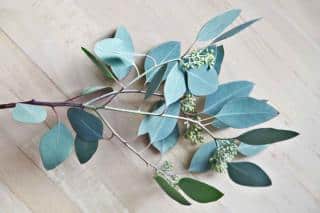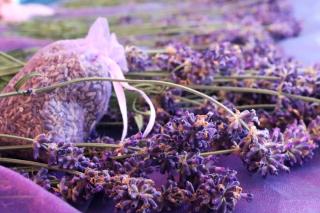The Barbary fig tree or Opuntia ficus-indica is a cactus that grows 6 ½ to 16 feet (2 to 5 meters) tall. Sweet fruit on the flat, paddle-shaped segments covered with bunches of needles are actually chock full of health benefits.
The Barbary fig tree belongs to the Cactaceae family, it is native to Mexico and naturalized across the entire planet.
Barbary fig, a short story
In the XVIth century, the Spanish introduced the Barbary fig tree in the Mediterranean area. It quickly felt right at home… And even turned to be quite invasive!
Health benefits of the Barbary fig
Barbary fig tree flowers are astringent and moisturizing: they’re used against diarrhea and digestive tract irritations. They can stop benign hemorrhages.
- When peeled of their spikes, the fleshy young stems make for an emollient poultice.
How to use Barbary fig for its health benefits
Ingestion
Barbary fig infusion – up to ½ oz (15g) flowered tips for half a quart (half a liter) boiling water. Ingest 2 teacups a day, whenever you feel cold or chilling.
Maceration – 1 oz (30 g) for 1 quart (1 liter) white wine. Let it sit for 15 days and drink two small wine glasses a day. As a tonic.
External use
Poultices – crush flowered tips and apply on wounds and contusions.
Growing Barbary fig for its health benefits
An absolute requirement to grow the Barbary fig tree is full sun and warm exposure. Any kind of poor soil, as long as it is deep and drains well, can host your Barbary fig tree, even if it’s full of rocks or laden with salt.
Tip:
Start off with a good pair of gloves when you start pruning your Barbary fig tree or when you harvest the fruits: its needles are very thin and even extreme care won’t leave you unscathed! They break off easily and wedge themselves in your skin.
Growing Barbary fig in pots
If you use a sand-based substrate, your Barbary fig tree will grow in a pot for several years. However, it’s rare that it will reach the point of ever bearing fruits.
Watch out for small bugs!
Its worst enemies are scale insects, also called mealy bugs. Whenever you see any, remove them manually.
Types and varieties of Barbary fig
There are around 200 known Barbary fig tree species, among which:
- Opuntia robusta – grown in Mexico for its fruits.
- Opuntia cochenillifera and Opuntia tuna – serve as living fodder for mealy bug farms. A pigment, “carmine red”, can be extracted from their bodies and has been for over 2000 years.
- Opuntia vulgaris – taller growing in the wild, but also good for indoor pots.
It’s possible to also use the fruits and segments.
Confusion alert!
Even though it’s called “Barbary fig tree”, there is absolutely no relationship with the orchard fig tree. And Barbary – which at the time meant North Africa – isn’t at all its native habitat. Harvesting it is actually quite difficult. Not so much because of the cactus needles themselves, but because of pricks on the fruits themselves. Indeed, there are bunches of needles called “glochids” that easily break off. These have barbs that prick your fingers (and if you were a bit too hungry, your mouth!) and it’s very difficult to dislodge them.
For the harvest, use a stick where you split the tip open to form a tripod. It’s then very easy to wedge the fruit in that and twist it off. Simply nudge the fruit and it will detach itself from the plant. To get rid of the spiny thorn clusters –glochids is their technical name– roll them over in sand or brush them carefully in the sink.
Cooking with barbary fig for its health benefits
Barbary fig can be eaten raw or cooked in jam (together with quince), but you can also prepare fruit jelly. Fermenting barbary fig makes great tequila.
In Mexico, Barbary fig tree paddles are an ingredient in many meals. Cooks slice them into strands and prepare them like string beans.
Nutritional content of Barbary fig
44 kcal / 3.5 oz (100 g). Barbary figs contain a lot of sugar, fiber, potassium, magnesium, iron, copper and vitamin C.
Savory ideas with Barbary fig
For the sweet-toothed among us: Barbary fig juice, Barbary fig and vanilla pie, Barbary fig sabayon. Those who prefer salty foods can try baking scallops on a bed of Barbary figs. This will help you discover this exotic and intriguing fruit!
A few synonyms of “Barbary fig” to shine…
This plant is also called “Tuna”, “prickly pear” and “Mickey Mouse cactus”!
By Blandine Merlin






it helps a lot especial lowering your blood sugar levels and cholesterol